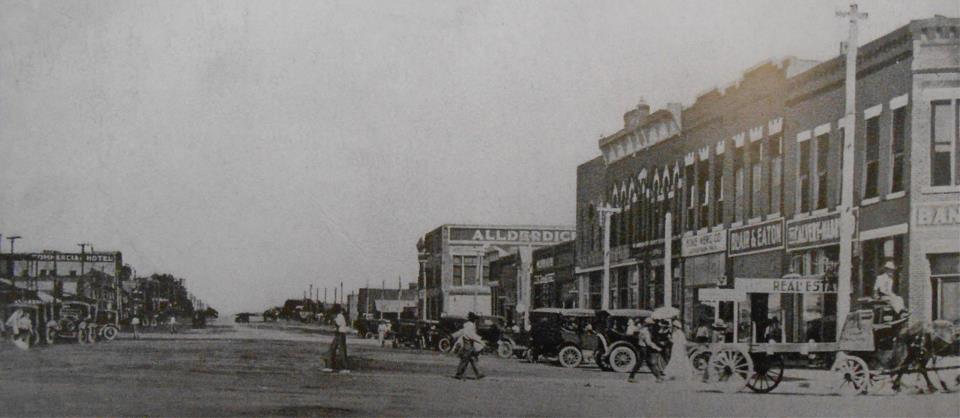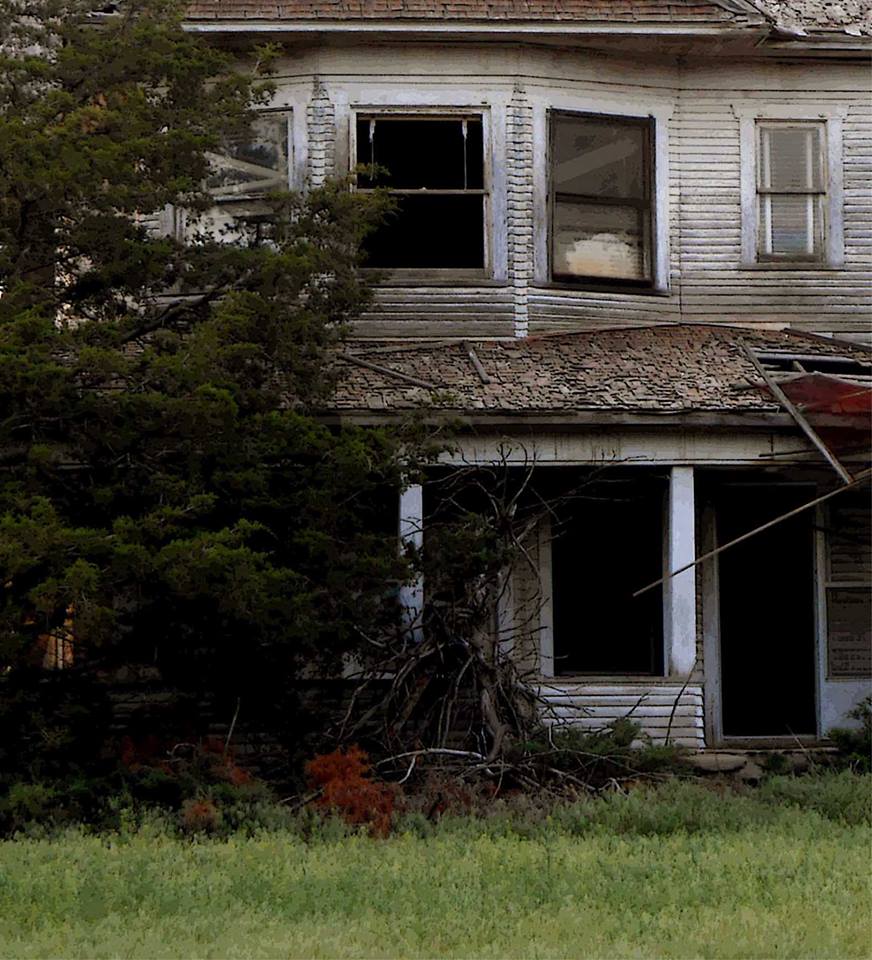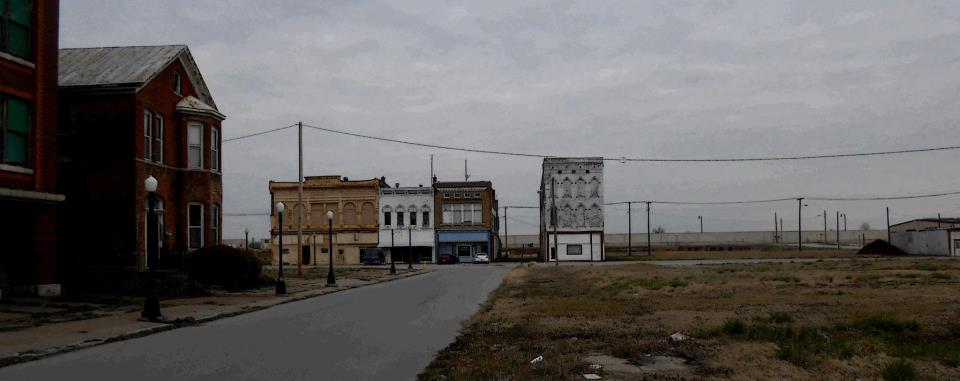I am hopelessly nostalgic. By nature, it seems, I am drawn to historic town squares, brick streets, and dusty museums. I am a sucker for trains and soda fountains. Any pre-World War II architectural style fascinates me. And this fascination, though it has brought me many charming afternoons and road trips, is sometimes wholly depressing.
Have you ever found yourself feeling resentful towards those “Historic Landmark” plaques? I have. Having spent hours building up the pleasant delusion that I’m actually walking down a street in the 1890s, I don’t want to see a bunch of plaques reminding me that, no, this street is just a novelty—a memory. I would rather ignore the likelihood of, within two blocks, stumbling upon a Walmart, a McDonald’s or an AutoZone. And I resent the generations who inherited so many would-be “landmarks,” but abandoned them, deciding to chase convenience down that never-ending rabbit hole of strip malls and cheap Chinese drywall.
I always wonder how one could make that choice? How can someone be raised in a Queen Anne Victorian, or a rambling farmhouse, or a shady Craftsman, and choose to just walk away? Walking through these old towns, so many empty shells of grand homes sit abandoned, crumbling into their foundations. Did no one think they were beautiful enough to save? Or did no one imagine that, as years wore on, their childhood homes would grow rarer, crowded out by pre-fab auto parts stores and fast food joints. Did anyone know that those years constituted a far more beautiful age than those to come? For instance, I wonder if even one person, seventy or eighty years ago, surveying the San Francisco skyline, thought to himself, “Well, it’s all downhill from here.”
Or whether, a hundred years ago, one man walking across a bridge in London, or through an alleyway in rural France, thought, “ I’d better take a good look today. It’s only going to get uglier from now on.” It would have been quite a visionary feat, I know, but I can almost imagine that one 1920’s woman, walking with hat and gloves among Boston’s brick row houses, realizing, suddenly, “The world will never be more beautiful than it is now.” And the strange exhilaration and sadness that would follow such a vision.
I know it’s naïve, of course, to say that our grandparents and great-grandparents lived in a better world than we do. What idiot would claim that life was any better for a woman, a black person, a sick, or unemployed person a hundred years ago? It’s only the misty-eyed conservative who remembers with fondness the “glories” of the Antebellum South or the “simpler” way of life led by his white, privileged forefathers, while forgetting, conveniently, the brutality and devastation those times wrought on the un-white, the un-male, the un-rich. No, I wouldn’t want to be one of those types. I would never take back the progress of the last century, or the evolution of thought.
But it seems the unfortunate way of the world that each important triumph has necessitated a corresponding sacrifice. The last century has seen ever-progressing human rights and ever-dazzling scientific discovery. Entire philosophies and cosmologies took hold, and were shuttered, and then rose again. Old gods, with their constant demands for judgment and division, fell away, to be replaced by new gods. And then those new gods—analysis, individualism, consumerism—settled in, and began to demand ransoms of their own.
The most seductive among these new Deities? The god of efficiency. “Isn’t there an easier way?” he asks. And there always was. With the advent of new technologies, there was always an easier, or faster, way. Why should you keep building a car the same way you built a carriage? Why should you spend thirty dollars for the cart at your friend’s store when the shop at the edge of town sells carts for twenty-five?
That vague notion, efficiency, spawned a whole new movement at the close of the 19th century and the beginning of the 20th. The assembly line! What an incredible idea! Fantastic for the consumer, who could purchase a car at unheard-of prices. And for the worker—who never once “made” anything, who was as replaceable as the cogs he placed, one after another, after another, in each wheel—well, he couldn’t complain—for fear that he’d be shipped, efficiently, out the door.
And so, gradually, we fled our past. Books, which required such efforts of imagination, were increasingly set aside for the easier pleasures of the radio. The radio was surpassed by the even less demanding fantasia of television. So much simpler, and faster.
What a revelation, to put down your letter-writing pen and pick up a telephone receiver. And now even that act seems passe. I can still remember the last time I spun the dial of a rotary phone, calling my parents from the church office, needing a ride home from catechism. Now our telephones talk to us in their own voices, navigate for us, and entertain us through those boring meals with our families.
How many of those losses were necessary, I wonder, in order to bring about the better forms of progress? Could we have still fought for Civil Rights without the interstate freeways? Could we have brought about laws against sexual harassment without the invention of Jello and the microwave dinner? Could we have kept both rock’n’roll and the family farm? I suspect we could have, if we only had had the desire.
The sum of what we’ve lost is charm. Why do Americans love to vacation in places like New Orleans, Charleston, or Napa Valley? What’s the appeal of a Bed and Breakfast? Charm. It’s charming to sleep in a beautiful old home. It’s charming to live a few days sans cell phone and ipad. It’s charming to buy your bread from a bakery, your chocolate malt from a soda fountain, and your wine from the vineyard. And why are those things charming? In part, it is because they require time. They usually require walking, or driving down cramped, winding roads. They require “going out of your way.” They require a deliberate choice of inefficiency, an extravagance to the modern American.
We have a desire for the trappings of the past, but, short of becoming Amish, our only outlet now for that desire is within the perverted reality of the tourism industry. We feel a longing for the slower, quieter days, but we receive only a facsimile. For instance, my husband and I recently spent a weekend driving back roads around the Northern edge of the Kansas-Missouri border, and found ourselves, for one night, in a small town North of Kansas City, along the banks of the Missouri River. Clearly, the beautiful little town had fashioned itself a regional tourist destination. A sign in the window of the Chamber of Commerce read, “Voted #1 weekend destination of Kansas City.” I could see why that would be. Lovely, winding roads descended into the town center, which offered a plethora of Victorian architecture and green, leafy charm. At first, I was entirely caught up. But, as we poked our heads into the little shops, I felt increasingly less enthralled. The town had it all, right? Antique shops, wineries, local pottery. But it was all for our benefit. All for tourism. One shop worker admitted, “Main Street does most all its business Friday through Sunday.” The grocery store was out on the edge of town, close to the highway. So was the Dollar General. That was the real town, for the people who lived there. This lovely little main street was just for us.
And, knowing that, the charm was gone.
When did the tourism trade become the only value of beauty? Every lovely little town in America is already considering how to turn their loveliness into profit. How to “brand” that loveliness, and then “market” it to attract dollars. It’s so much the rule that now I’m suspicious of any town with leafy well-kept historical neighborhoods, or a busy Victorian Main Street. “Is this the real town?” I wonder. “Are those locals in the coffee shop?” The only benefit, it seems, of having an attractive town is to sell that attractiveness to outsiders. Just having a nice town, for the the sake of itself, doesn’t occur to anyone. It just doesn’t enter the equation. And, if the town isn’t trying to attract tourists, then the value of its history is nil. In the quiet, depressed towns around the Midwest, too many miles from the interstate economy, historic homes and buildings collapse from neglect. We drive by dozens of working farms near our town, and it always saddens me to see the empty old farmhouses, windowless and rotting to nothing, while twenty yards closer to the road is the new, modular home where the family now lives. Wouldn’t it haunt me, I think, to live next to my father’s childhood home and to watch it crumble into dust?
I could (and likely will) write a million articles on all the horrible effects of efficiency. That prevailing ethos of “cheaper, faster, easier” is probably the most destructive idea ever to occur to the human race. It dehumanizes every aspect of our lives—perverts every noble thought or memory for profit. But the everyday face of that heartache, to me, is watching the disintegration of those old, forgotten buildings. Each day of the last century has presented that choice—to preserve the past, or to abandon it, and each day we chose the latter. We chose that homogenized sprawl of Walmarts and fast foods and Home Depots. It was so much cheaper, and faster, and easier than keeping the downtown alive. We chose to abandon our parents’ front porches for the spacious, air-conditioned suburban homes. It was so much easier that way. Those old buildings were built to be beautiful—with intricate metalwork or gingerbread trim or turrets. (One building nearby, which will soon be torn down, has hearts embellished into the concrete arch of each window.) Now we build for the ease of amenities, and all those beautiful, painstakingly detailed buildings are outnumbered, and will eventually be replaced, by pre-fabricated metal boxes.
It would be difficult for me, if I were presented with the option of returning to the past or remaining in my own time. As a woman, I wouldn’t give up my enfranchisement. I wouldn’t want to see the institutionalized prejudice, or the endemic neglect of the poor, which has characterized so much of American history. At the same time, I would relish living in a less efficient world. I would love to see these old neglected buildings in their heyday—shining and buzzing with activity. I would love to sit on a downtown bench, watching the families promenade along brick streets. I would ask strangers, “Isn’t this the most beautiful place?” And I wonder how I would keep my face from falling when, inevitably, they responded back, “Oh, surely the best is yet to come.”
To read the PDF version of this article, click here.
Don’t forget the Zephyr ads! All links are hot!










Lovely essay! Reminds me a bit of this photo essay: http://www.dailymail.co.uk/news/article-2316987/Photographer-Niki-Feijens-eerie-images-abandoned-farm-houses.html
Love that photo essay! Lots of places like that (though not as grand) around here, with beds made and plates on the table, eerily abandoned. Even more eerie, to consider what sort of emergency would require leaving so quickly, without children’s toys or bed linens. -Tonya S.
[…] (The following article was written by Tonya Stiles and originally published in the Canyon Country Zephyr) […]
We almost bought a charming Victorian that could pass for a lighter, brighter version of The Addams Family house. The reason we didn’t and I suspect the reason a lot of people pass on them is the need for major repairs and the difficulty of repairing a house with that type of construction. The two storey bay sections, the towers with conical roof, the Mansard with built in rain gutters may have been easy enough to build from scratch but take it from someone who lived in one; they are very difficult and costly to repair.
Bull’s-eye!
So I’d like to share one of my favorite passages from Carl Jung, from a seminar on dream interpretation that he gave to his English-speaking students from 1928-30: “…the American efficiency is far more destructive than the Eastern lack of it…it is not only the psychological destruction of the individual, it is also physiological. Look at the men in Wall Street! At forty-five they are completely exhausted. Modern life in America is more efficient than in any place in the world, but it completely destroys the man…So if one added a bit of the Eastern wu wei to our Western idea of efficiency it would perhaps be helpful. Naturally our efficiency would suffer, but that is a monster, a dragon, which eats human life.”
It destroys our towns and villages and our landscapes as well.
I only wish I could have read this essay in hard print instead of sitting in front of my glowing computer screen…. it gets harder and harder for me to read the Z from “cover to cover” like I used to.
I loved this article. It hits on what has become a main theme in my life. I am a plumber and pipe fitter in Denver. My specialty is repair and replacement of antique hot water heat and steam heat systems in the older houses in town. I love the old work. Now here is the key for me, this work was done by hand, no power tools at all. Slow, yes, inefficient, hardly. These men who did this work did not have to worry about going faster than they could think. Mistakes were caught as they were making them. If you had to cut a long board by hand, you measured twice and cut once. This also meant that the more of the work was within the workers control. Todays system rewards the factory owners and the wall street barons, installation of modern pipe systems has been dumbed down to the lowest common denominator with the majority of the profit going to the manufacturer. Those old systems worked for seventy five and eighty years with little to no maintenance, often under their own power. Just as a side note I too miss the days of reading the Zephyr cover to cover, but I am glad to see it in any form, thanks Jim and Tonya
[…] (The following article was written by Tonya Stiles and originally published in the Canyon Country Zephyr) […]